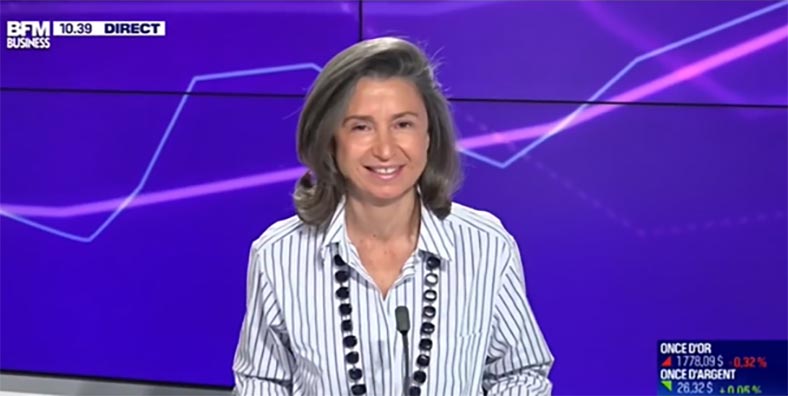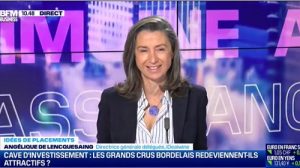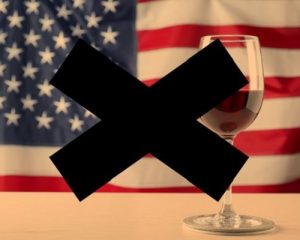
Angélique de Lencquesaing spoke to Cédric Decoeur on the BFM Business channel, with their main talking points being the impact of the severe frost that hit French vineyards recently and first impressions of the 2020 vintage in Bordeaux.
The beautiful photos we saw of vineyards lit up with torches represented such a cruel paradox…
Indeed, we’ve just witnessed ‘the biggest agronomic catastrophe of the 21st century’ according to Julien Denormandie (France’s Agricultural Minister).
This was already a premature vintage, with conditions in March encouraging the vines to blossom, and this left the plants vulnerable when the frost arrived.
A period of frost at the start of April is nothing new, nor is it surprising for this to have an impact on the vineyards. However, we are noticing that such episodes are occurring more and more frequently, with this year’s unfortunate event standing out for two reasons:
- It affected practically all of France’s wine regions, even if some were less gravely impacted due to the budding calendar of their vines
- It was more intense than what we’ve seen previously, with temperatures dropping far below freezing.
Are wine growers not equipped to deal with frost?
Some producers, especially in Chablis, are unfortunately quite used to this, so have developed their own methods of fighting the cold. Huge candles are placed in the vineyards and hay is set alight. In some of the more prestigious vineyards, heating cables are used. Wind turbines and even helicopters help to get the cold air moving.
However, when we’re talking about -7 or -8°C, even these interventions can come to nothing.
What impact will this frost have on producers?
To be honest, it’s still a little bit early to say for sure. After the frost, some of the vines are literally scorched. Others can be surprisingly resilient. The FNSEA has estimated the loss at around a third of vines overall, worth around two billion euros. In some areas, though, the picture is much worse, with estimates rising as far as 80 to even 100%. The worst-affected regions appear to be the Languedoc, south Bordeaux (Sauternes, Entre-deux-Mers), Burgundy (especially for Chardonnay), and the Loire.
How are they going to make up for these losses? Will there be an impact on prices?
This may be the case, but it won’t be possible for every domain. Of course, when the yield is lower, there is a temptation to hike up prices to make up for losses in volume. But this is only a viable option for estates and regions where demand is higher than supply.
This is the case, for example, in Burgundy, where the Chardonnay grapes have particularly suffered, both in Chablis and the Côte de Beaune. The region’s white wines are already rare and highly coveted, so those produced this year will be almost unfindable, and thus likely more expensive.
Some producers have decided to keep a stock of the wines that haven’t yet been put up for sale, with the idea of extending the sale of these over a longer period. This prevents the domain from totally disappearing from the market. Clearly, though, not every property is in a position to be refusing orders.
Shifting the focus more specifically to Bordeaux, the primeur campaign has started! How is the 2020 vintage looking?
The quality of any vintage is closely linked, of course, to the climate of the year. This determines not only the quality of the harvest, but also the volumes produced. There are also economic factors at play when deciding upon the prices, but we’re not quite there yet.
2020 was a sunny year, we all remember the beautiful weather we had during the lockdown…
Yes, but not everything rests on the months of March and April! Of course, the weather was beautiful during lockdown, followed by a hot summer. But success lies, more than anything, in the management of water stress.
Which is?
During the spring, the vines grew really quickly, two or three weeks ahead of their usual calendar. They then took in a lot of water due to heavy rain until mid-June; humidity was high with the soil saturated. This humid spring – which sometimes brings diseases like mildew and oidium – allowed for water reserves to form. This was essential for the months that followed, since Bordeaux didn’t see a drop of water for more than six weeks. A storm in the middle of August was the only weather event that released this pressure. It is good for the vines to undergo this kind of water restriction, as they stop growing, instead using their energy to ripen their fruit. However, this mustn’t reach the extremities of water stress, which entirely stops the plant from developing.
This is a tricky vintage then?
It wasn’t an easy one to manage, that’s for sure! Producers constantly had to be making choices about whether to cut back some of their vines or limit the removal of leaves to prevent the grapes from roasting in the sun. Then came the vital question of when exactly to harvest the fruit. This turned out to be crucial for the châteaux, as a significant amount of rain began to fall from the 24th of September.
Since the grapes matured earlier, was this important?
It all depends on the grape. Merlot had the advantage over the Cabernet sauvignon vines, which traditionally ripen later and are picked last.
It also depends on the soil. For the 2020 vintage, it was the clay-rich earth that came out on top due to its capacity for water retention.
Finally, what can we say of the wine’s quality? Is it possible to outline a general profile for the 2020 vintage?
Decent volumes have been produced by the domains fitting the criteria above – Merlot grapes, clay-rich soils – even if this is slightly reductive. The right bank clearly got the best of this. In the Médoc there were more losses; the need to sort through the harvest caused eventual yields to drop by 30%. This is a well-made vintage, with a charming character in Pessac-Léognan. These are elegant wines with great density. A lovely vintage for Bordeaux.
And a nice surprise for the prices?
Bordeaux hasn’t started its price discussion yet. It’s going to be a long campaign, at least for the most prestigious properties. 2019 was an attractive vintage in terms of price. Plus, Bordeaux was going through a phase of winning back public favour: wines that can be uncorked sooner, at more enticing prices.
Interested in selling your wine with us? Find out more here.



